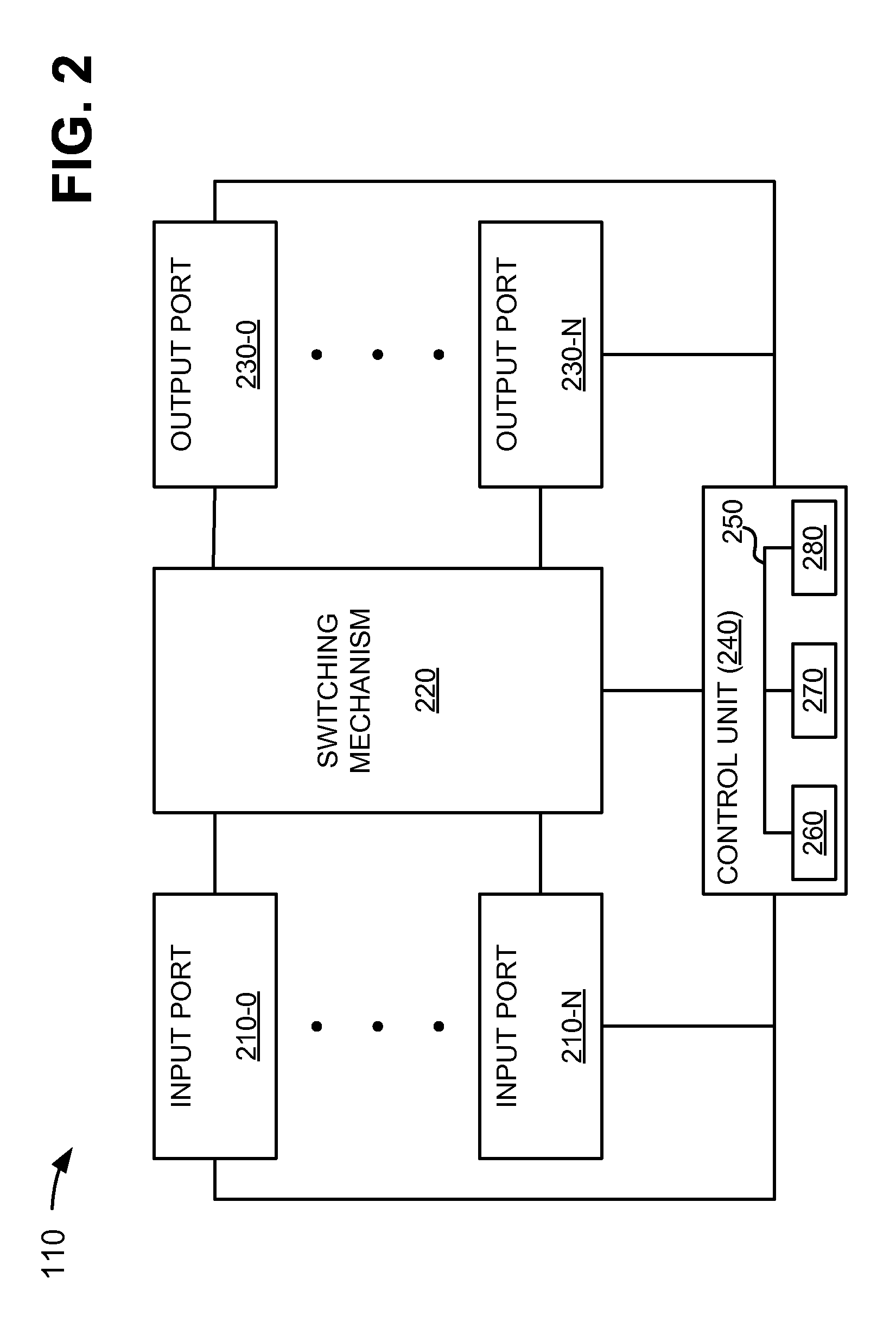Bandwidth-based admission control mechanism
a control mechanism and bandwidth technology, applied in the field of computer networking, can solve the problems of not being able to support the aggregated capacity, current load balancing methods do not fully protect traffic, and cannot guarantee the even distribution of traffic among lag links
- Summary
- Abstract
- Description
- Claims
- Application Information
AI Technical Summary
Problems solved by technology
Method used
Image
Examples
Embodiment Construction
[0011]The following detailed description refers to the accompanying drawings. The same reference numbers in different drawings may identify the same or similar elements. Also, the following detailed description does not limit the invention.
[0012]Implementations described herein may provide a bandwidth-based admission control mechanism for allocating traffic bandwidth on a LAG defined in a network (e.g., a switched network for point-to-point Ethernet Virtual Connections (EVCs)). The mechanism may address the available bandwidth on an Ethernet LAG, and may take into account a number of links in the LAG, availability, oversubscription, class of service (CoS), and load balancing uncertainty on links in the LAG.
[0013]FIG. 1 is a diagram illustrating an exemplary network 100 in which systems and methods described herein may be implemented. Network 100 may include, for example, a local area network (LAN), a private network (e.g., a company intranet), a wide area network (WAN), a metropolit...
PUM
 Login to View More
Login to View More Abstract
Description
Claims
Application Information
 Login to View More
Login to View More - R&D
- Intellectual Property
- Life Sciences
- Materials
- Tech Scout
- Unparalleled Data Quality
- Higher Quality Content
- 60% Fewer Hallucinations
Browse by: Latest US Patents, China's latest patents, Technical Efficacy Thesaurus, Application Domain, Technology Topic, Popular Technical Reports.
© 2025 PatSnap. All rights reserved.Legal|Privacy policy|Modern Slavery Act Transparency Statement|Sitemap|About US| Contact US: help@patsnap.com



